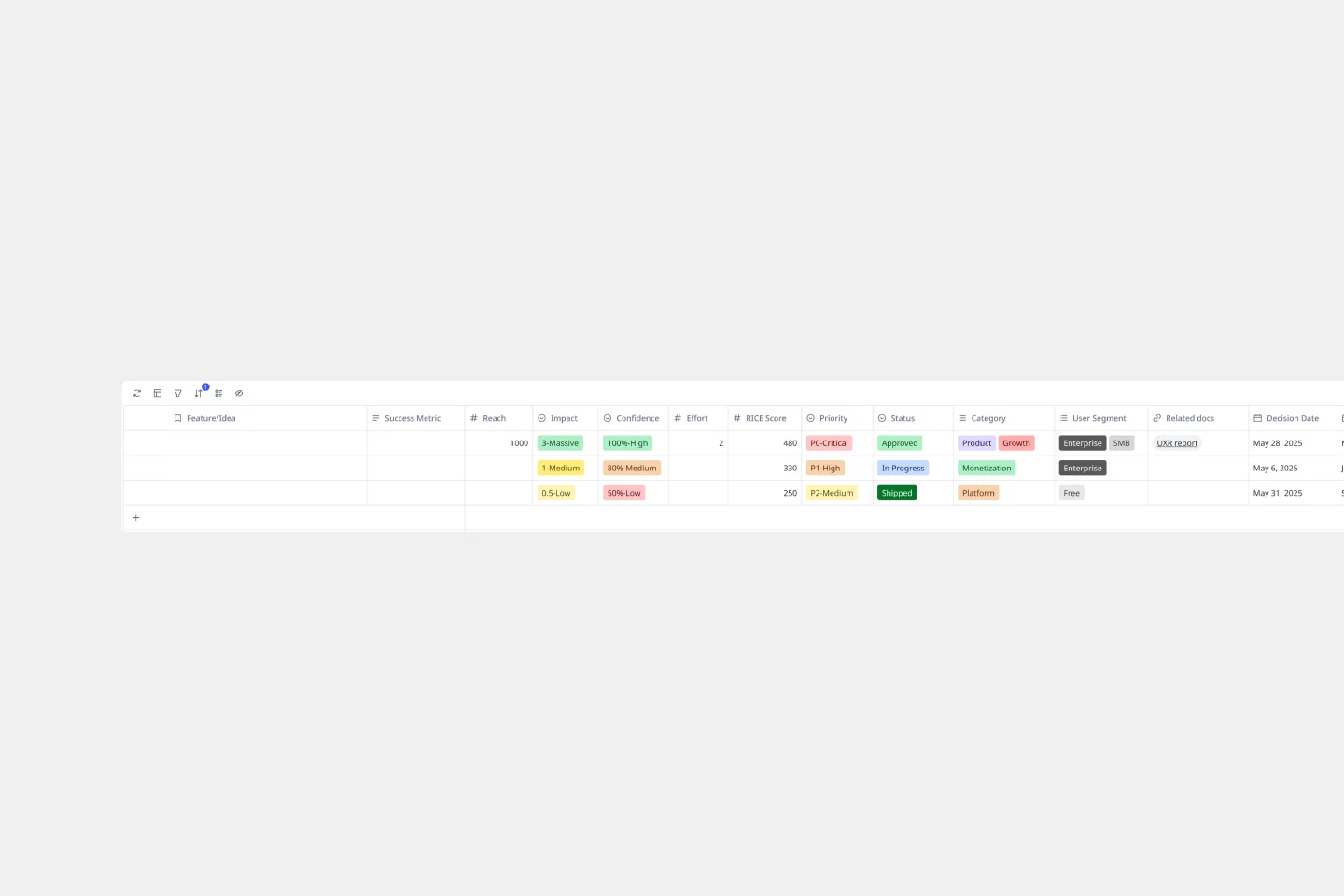All templates
Features Prioritization Tool

Yuval Eitan
Product Manager & UX Expert @ YE
A Product Manager & UX designer, with a passion for compelling user experience and B2C products. I have tried, failed and succeeded enough times to finally learn how to do things right.
Categories
Similar templates
Feature Planning Template
0 likes
25 uses

RICE Prioritization Template
1 likes
29 uses

Cone Roadmap
151 likes
778 uses

Feature Planning Template
0 likes
25 uses

RICE Prioritization Template
1 likes
29 uses

Cone Roadmap
151 likes
778 uses
